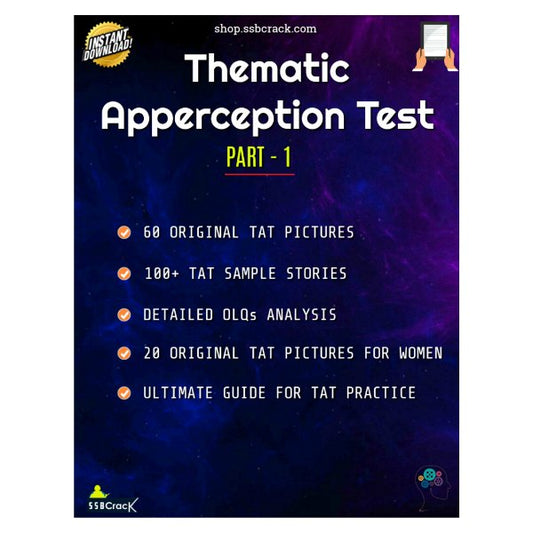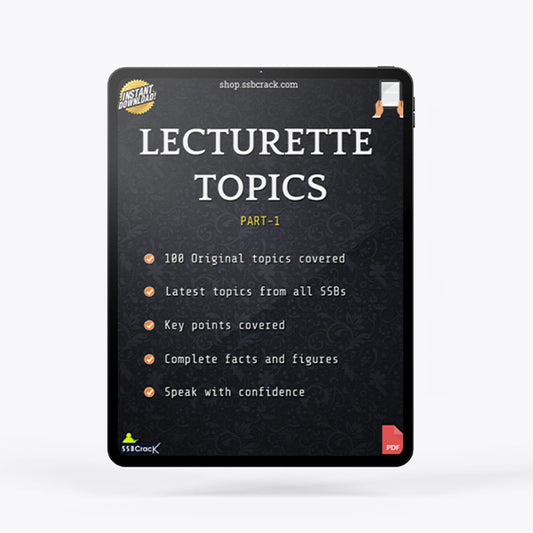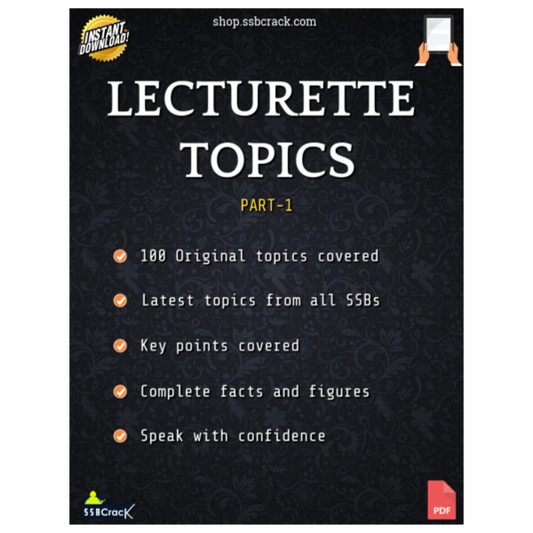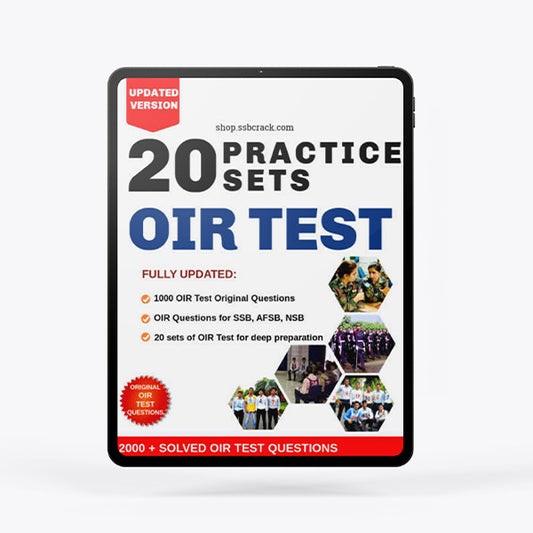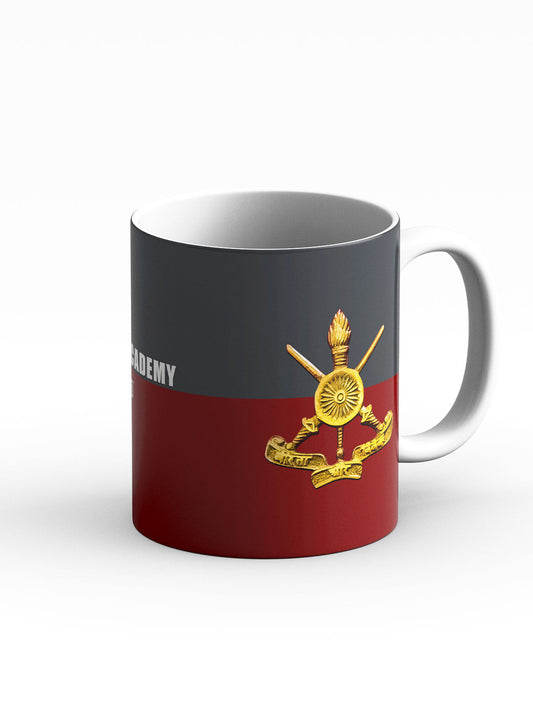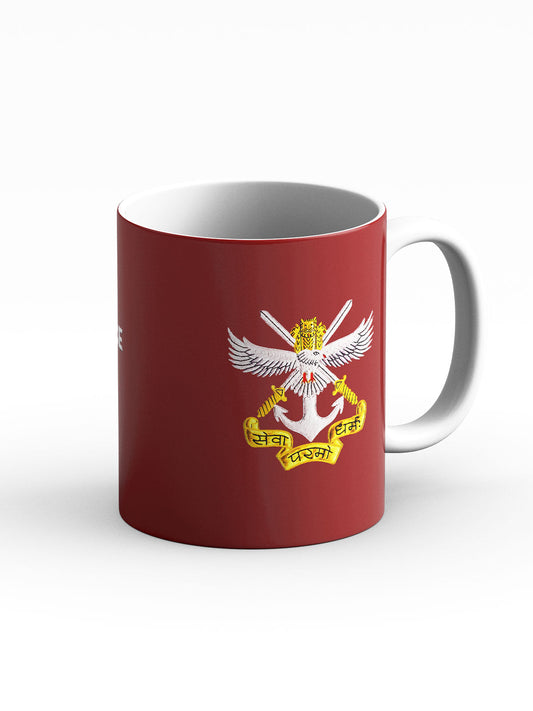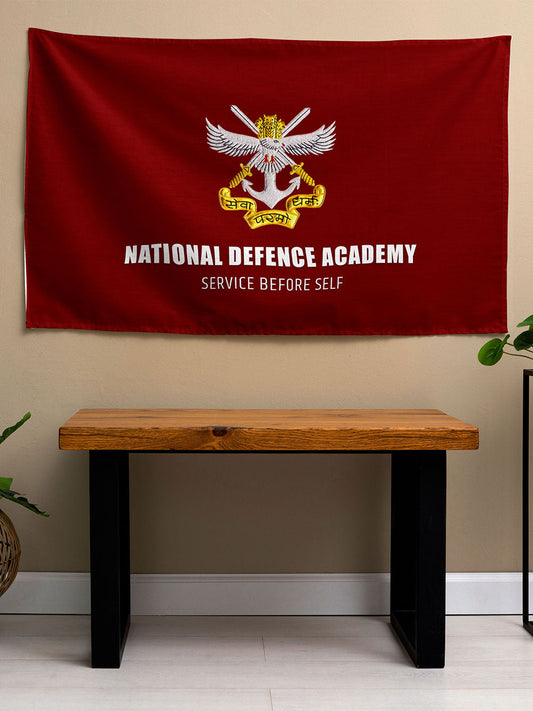50 Positive Word Association Test (WAT) Examples

The Word Association Test (WAT) is an intriguing means of evaluating the subconscious thoughts, personality traits, and emotional nuances of candidates. This psychological assessment has gained notable traction in various selection processes, especially in military and defence services, where understanding a candidate's inner motivations and reactions is paramount.
The test consists of presenting participants with a series of words for brief periods, prompting them to respond with their immediate associations. This process can reveal hidden strengths, weaknesses, and thought patterns that are not immediately apparent through traditional assessment methods.
SSB Interview Books Power Pack: 4 Must Read Books for Defence Aspirants
Rs. 1,760.00
Sale price
Rs. 1,399.00
Let's Crack SSB Interview Book [Paperback]
Rs. 390.00
Sale price
Rs. 360.00
Breaking The Code of SSB Psychological Tests Book - SSB Interview (TAT/WAT/SRT/SD)
Rs. 390.00
Sale price
Rs. 360.00
OIR Test & PPDT Book - SSB Interview Screening Test - Stage 1 Testing
Rs. 490.00
Sale price
Rs. 375.00
Historical Context of the Word Association Test
The concept of measuring subconscious thoughts can be traced back to the early 20th century with the development of psychoanalytic techniques by psychologists such as Sigmund Freud. Over the decades, various forms of psychological testing have emerged, each aiming to delve deeper into the human psyche. The WAT was specifically developed to uncover the qualitative aspects of personality beyond overt behavior. Initially utilized within clinical settings to aid diagnosis, the test has since evolved into a reliable tool for recruitment and selection processes across various sectors, particularly where teamwork and leadership abilities are critical.
Historically, tests like the WAT offered a structured method for understanding mental associations, lending credence to their use in military assessments where quick decision-making and emotional resilience are pivotal. By understanding how candidates react to key words—often linked to vital attributes like leadership, motivation, and emotional intelligence—selection boards can gauge if they are suitable for the demands of military service.
Importance of the Word Association Test in Modern Selection
The WAT serves multiple purposes in assessment:
- Revealing Subconscious Traits: Responses may unveil hidden emotional drivers and biases, providing insights into a candidate's character and decision-making processes.
- Evaluating Culture Fit: In organisations where teamwork and collaboration are essential, understanding how candidates view concepts like 'leadership' or 'cooperation' can forecast how they will fit within the existing culture.
- Enhancing Self-awareness: For candidates, engaging with the WAT can be a process of self-reflection, offering a chance to understand how they perceive their attributes and aspirations.
Effective Strategies for Success in the WAT
When approaching the WAT, candidates can adopt several strategies to enhance their performance:
- Authenticity: Candidates should strive to provide genuine responses. Authenticity demonstrates self-awareness and confidence.
- Regular Practice: Like any skill, the ability to articulate associations can be honed. Practicing with sample words can enhance mental agility.
- Positive Framing: Keeping associations optimistic can create a more favorable impression. For instance, framing 'failure' as a 'learning experience' can show resilience.
- Avoiding Clichés: Generic responses can suggest a lack of depth in understanding. Candidates should aim for nuanced replies.
- Conciseness: Keeping answers brief and focused ensures clarity and ease of understanding.
- Expanding Vocabulary: A broad vocabulary allows for more precision in responses, enabling candidates to articulate their thoughts effectively.
SSB Interview Study Material 2025 [ Pack of 17 eBooks ]
Rs. 1,313.00
Sale price
Rs. 499.00
Thematic Apperception Test (TAT) Part 1 eBook [100+ Stories]
Rs. 150.00
Sale price
Rs. 139.00
SSB Lecturette Topics Part-1 eBook [100 Topics]
Rs. 149.00
Sale price
Rs. 125.00
OIR Test eBook with 20 Practice Sets - [1000+ Questions Included]
Rs. 250.00
Sale price
Rs. 199.00
Positive Word Association Examples
Engaging in the Word Association Test can be a powerful exercise, particularly when candidates have a repertoire of positive associations ready at hand. Below are 50 examples of positive word associations, categorized into relevant themes.
Leadership and Teamwork
- Leader – Inspires action.
- Teamwork – Collective achievement.
- Cooperate – Enhances performance through collaboration.
- Mentor – Guides growth.
- Vision – Forward-thinking perspective.
Personal Growth and Development
- Challenge – Opportunity for growth.
- Failure – Learning experience.
- Discipline – Steadfast commitment.
- Determination – Resolve to persist.
- Progress – Continuous improvement.
Positive Traits and Values
- Honesty – Foundation of trust.
- Respect – Earned recognition.
- Integrity – Adherence to moral principles.
- Courage – Action despite uncertainty.
- Empathy – Understanding others’ feelings.
Emotional and Psychological Well-being
- Joy – Experience of inner fulfillment.
- Peace – State of internal harmony.
- Happiness – Present contentment.
- Love – Deep, selfless devotion.
- Contentment – Satisfaction with one’s situation.
Motivation and Ambition
- Ambition – Directed aspiration towards goals.
- Motivation – Inner drive to succeed.
- Passion – Strong enthusiasm for pursuits.
- Success – Achievement of aspirations.
- Goals – Clear targets for achievement.
Social and Community Aspects
- Family – Source of unconditional support.
- Friendship – Mutual growth and support.
- Community – Space for shared responsibility.
- Unity – Strength in togetherness.
- Volunteerism – Giving back to the community.
Personal Strengths
- Strength – Capacity to endure challenges.
- Resilience – Ability to bounce back from setbacks.
- Capable – Empowered to achieve goals.
- Confidence – Belief in one’s abilities.
- Resourcefulness – Inventively solving problems.
Growth Mindset
- Potential – Untapped abilities waiting to be developed.
- Innovation – Original ideas leading to progress.
- Creativity – Using imagination to generate new ideas.
- Flexibility – Adapting to changing circumstances.
- Curiosity – Eagerness to learn and explore.
Optimism and Future Outlook
- Hope – Optimistic outlook for the future.
- Choice – Empowerment through decisions.
- Opportunities – Possibilities for success.
- Dream – Aspirations that drive ambition.
- Inspiration – Motivating force to achieve greatness.
Commitment and Responsibility
- Dedication – Strong allegiance to tasks.
- Perseverance – Persistence in the face of obstacles.
- Accountability – Owning one’s actions.
- Loyalty – Faithfulness to those in one’s circle.
- Initiative – Taking proactive steps towards goals.
Case Studies or Real-world Applications
The effectiveness of the Word Association Test (WAT) has been exemplified through various case studies involving military and corporate assessments.
In the military, for instance, the SSB (Services Selection Board) utilize the WAT to identify candidates suited for leadership roles. They analyze responses not only to gauge immediate psychological traits but also to predict future performance under stress. Historical outcomes have shown that those who provide positive associations tend to exhibit greater resilience and adaptability when faced with real-life challenges.
In corporate settings, leading companies such as Google have integrated psychological assessments similar to the WAT into their hiring processes. By doing so, they have been able to foster innovative teams that thrive on collaboration and creativity. Emerging research supports the notion that positive associations correlate with enhanced team dynamics and overall workplace satisfaction.
Statistical Data and Research Insights
Research indicates that psychological assessments, including the WAT, significantly enhance the accuracy of predicting job performance. According to a meta-analysis published in the Journal of Personnel Psychology, methods that include projected psychological evaluations yield a 30% higher prediction rate of employee performance than traditional interview techniques (Highhouse, 2008). By probing deeper into subconscious associations, evaluators can pinpoint traits such as emotional intelligence and resilience that align closely with successful job performance.
Comparative Analysis
While the WAT is not the only tool used for psychological assessment, it stands out for its ability to uncover immediate, subconscious responses. Other methods, like structured interviews and personality tests, often rely on reflectiveness, which can introduce biases. In contrast, the WAT captures genuine, instinctive reactions, providing a more accurate representation of an individual's character.
However, it is crucial to recognize the limitations of the WAT. Its effectiveness can be influenced by various factors such as the candidate's mood at the time of testing or their prior exposure to similar assessments. Thus, a combination of the WAT with other evaluative techniques often yields the best outcomes.
Challenges and Solutions
Candidates may encounter several challenges when participating in the WAT:
- Acute Anxiety: Many participants feel pressure to perform well, which can skew responses. Solutions include practising relaxation techniques or familiarizing oneself with the process beforehand.
- Imposter Syndrome: Candidates might struggle with self-doubt, questioning their abilities, which can impact authenticity. Building self-awareness through reflective journaling can help alleviate these fears.
- Cultural Differences: Varied cultural backgrounds can affect word associations. It is essential for evaluators to be culturally sensitive, ensuring fairness in assessment.
Future Trends and Predictions
Looking forward, the use of psychological testing like the WAT is likely to see an increase, particularly as workplaces evolve toward more collaborative and psychologically agile environments. Emerging technologies such as AI and machine learning are expected to refine and enhance WAT implementations, offering individualized feedback based on responses.
As the demand for emotional intelligence and soft skills rises in workplaces, assessments that reveal deep-seated emotional responses will become invaluable for hiring executives seeking candidates who thrive in dynamic environments.
Conclusion
The Word Association Test (WAT) is not merely a psychological assessment tool; it is a lens into the subconscious, offering profound insights into an individual's personality and thought processes. The significance of positive word associations lies in their ability to illuminate one's character, revealing attributes that are essential for thriving in leadership roles, particularly within military and defence services.
Through understanding and effectively preparing for the WAT, candidates can showcase their strengths, all while fostering a mindset focused on growth and positivity. As the landscape of recruitment continues to evolve, the emphasis on tools like the WAT underscores the importance of authentic self-representation in the assessment process.
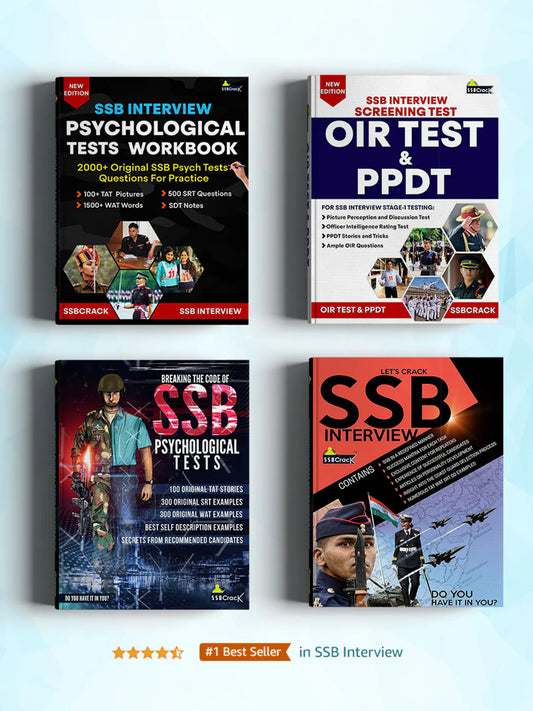
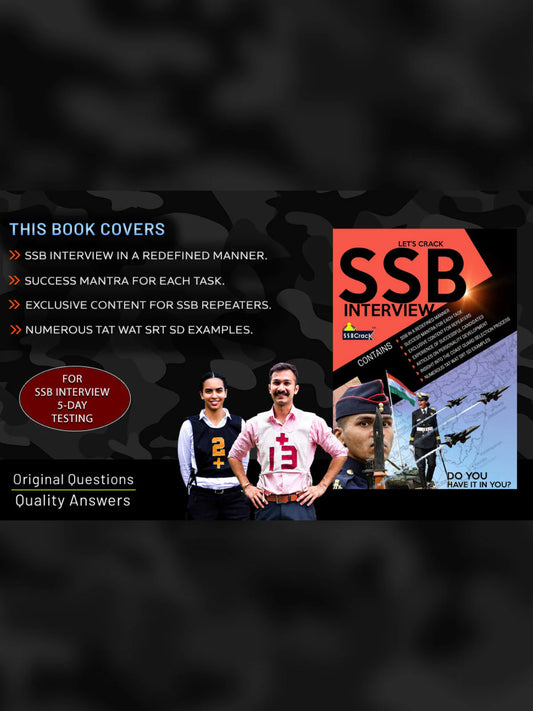
![Let's Crack SSB Interview Book [Paperback]](http://shop.ssbcrack.com/cdn/shop/files/ssb-books.webp?v=1736351621&width=533)
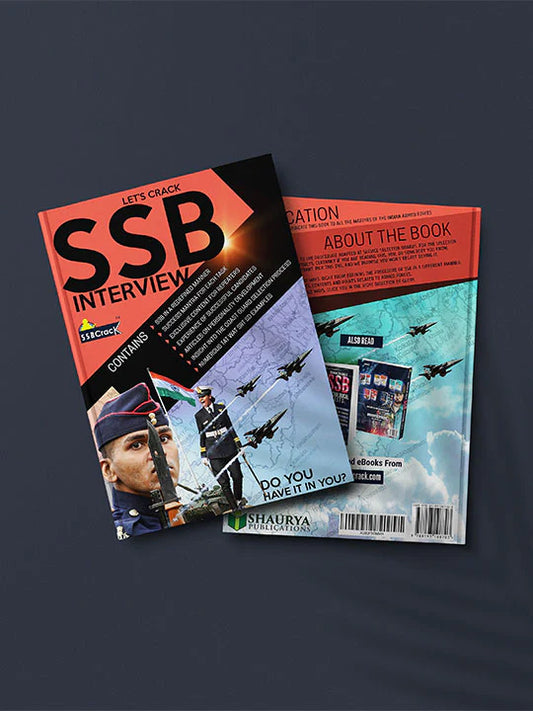
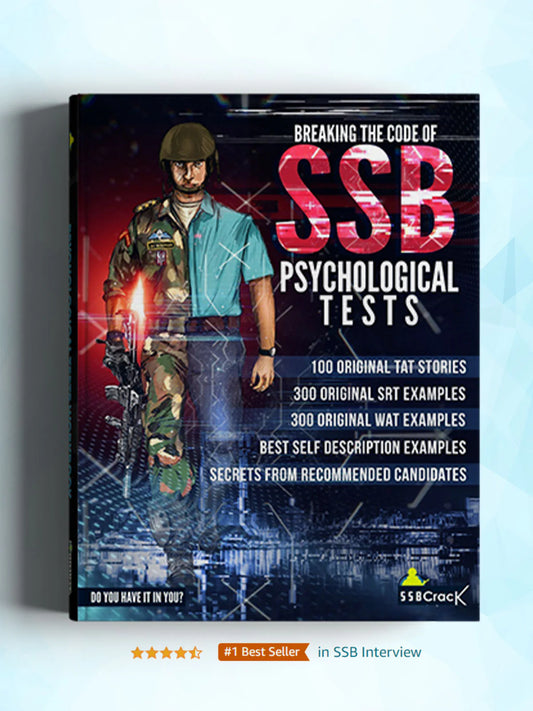
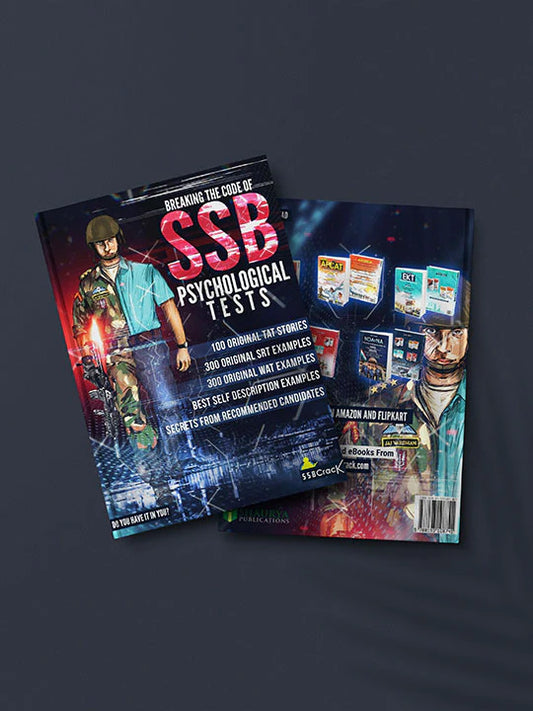
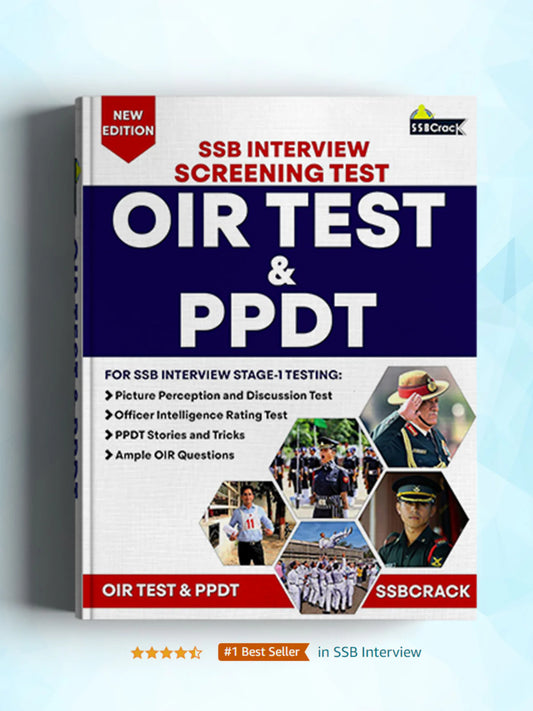



![Thematic Apperception Test (TAT) Part 1 eBook [100+ Stories]](http://shop.ssbcrack.com/cdn/shop/files/TAT-ebook-part-1-ssbcrack_051ae49c-43ea-4eb4-95c7-0fa0bfa2a639.jpg?v=1735540406&width=533)
